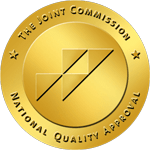“Detox” is often tossed around, meaning everything from beauty-boosting juice cleanses to severing ties with poisonous friends. But in the realm of alcohol and drug treatment, detox is a term that holds tremendous significance: it’s the first fundamental step on the road towards recovery.
As common as the word might be, many people don’t know what, exactly, detox means—or how long it will last. And within that uncertainty, fear often breeds, preventing people from taking the necessary measures to reclaim their lives.
In the simplest terms, drug and alcohol detox is a period of time in which the consumption of substances is ceased and the body purges itself of toxins. But as simple as it might sound, it’s a complex process that varies widely from person to person.
One truth, however, remains universal: withdrawal symptoms create physical and psychological unease. As you go through withdrawal, which can last from forty-eight hours to two weeks, you may experience a host of uncomfortable, even painful—and sometimes perilous—symptoms. The extent and severity of these symptoms depends on the history of abuse, including the type of substance used, the length of addiction, and the presence of co-existing physical or mental illnesses.
Most addicts experience a common set of symptoms. As withdrawal occurs, the autonomic nervous system—a branch of the nervous system that facilitates the body’s reaction to stress—kicks into over-activity:
- Physically, you may experience headaches, profuse sweating, chills, nausea, cramping, and tremors.
- Mentally, you may have trouble concentrating, feel disoriented, and experience amplified sensitivity to light and sound.
- Psychologically, you may feel agitated and irritable, have deep emotional lows, and have powerful, often overwhelming cravings.
Withdrawal symptoms vary depending on the type of substance abused and the duration of the abuse, for instance:
- Alcohol detox can include Delirium Tremens (DTs)—the gravest and most intensely-felt side effect of alcohol withdrawal. Characterized by confusion, acute agitation, auditory and visual hallucinations, and significant increases in heart rate, breathing rate, and blood pressure, DTs impact roughly 5% of people undergoing alcohol withdrawal and can, in extreme cases, lead to death.
- Methamphetamine withdrawal is marked by paranoia, aggression, profound depression, and suicidal thoughts.
- Opiate withdrawal involves much of the same, as well as severe joint and muscle pain.
Some may choose to quit drugs and/or alcohol on their own. While every step towards recovery is admirable, the safety and efficacy of a medically-supervised detox cannot be overstated. Because of the volatile nature of withdrawal symptoms—which can worsen rapidly and unexpectedly—it’s important for a patient to be closely monitored throughout the process.
Medical Detox
Medicine is frequently administered to diminish cravings and alleviate the aches, insomnia, and psychological distress that arise. Additionally, many inpatient detox programs include counseling, education, and emotional support—all of which are key to the arduous but beautiful journey that is recovery.
Whichever route you choose, know that the challenges detox presents are temporary. The benefits, however, are often permanent—leading to lasting, positive change.



